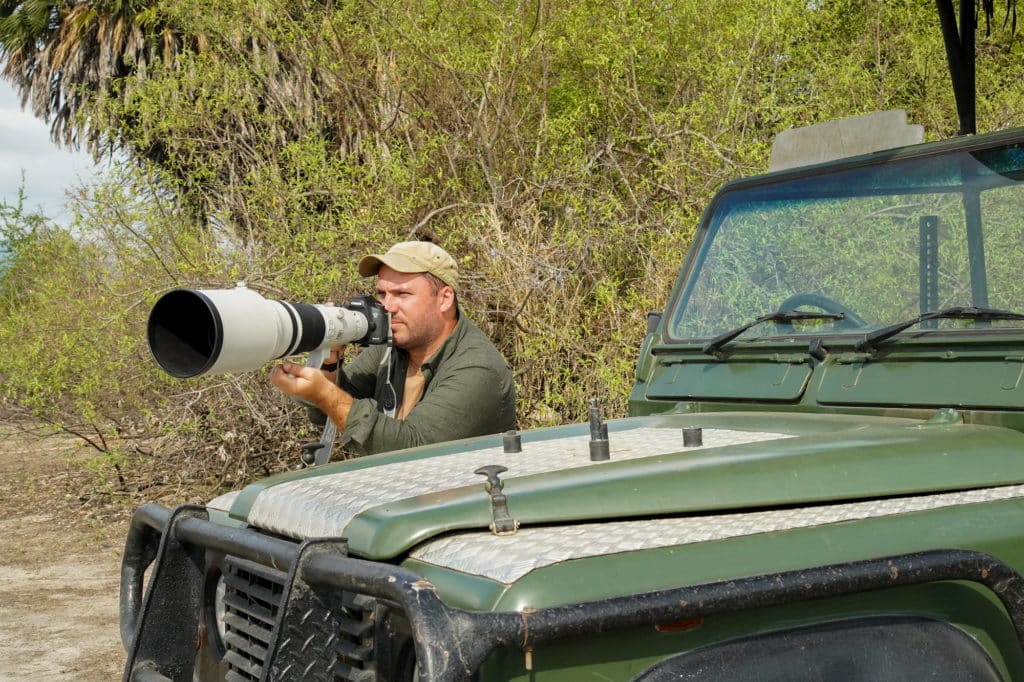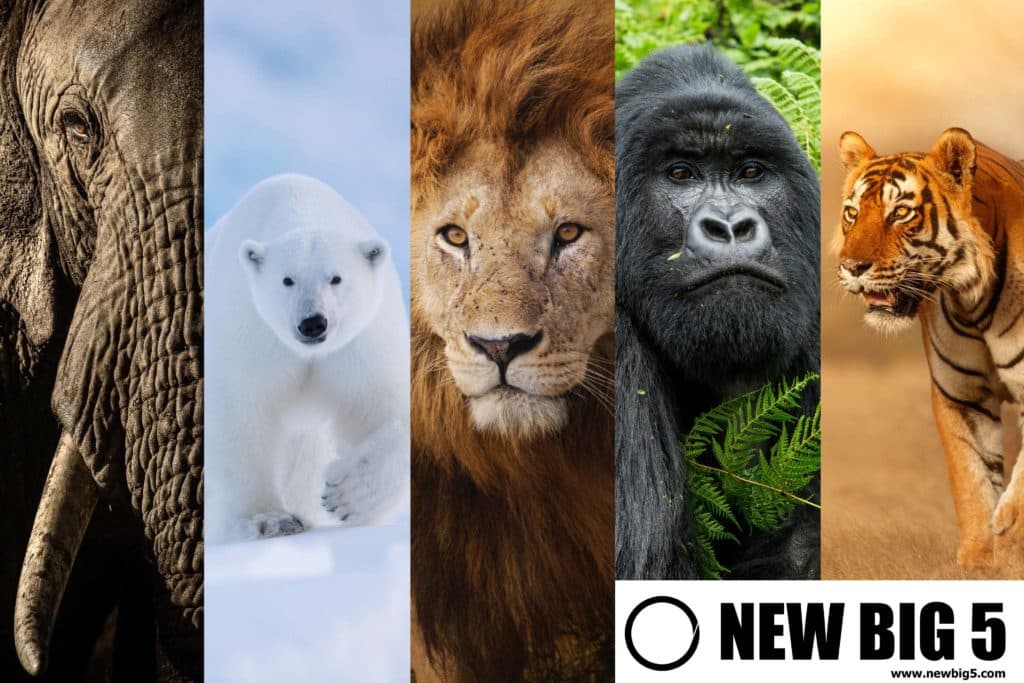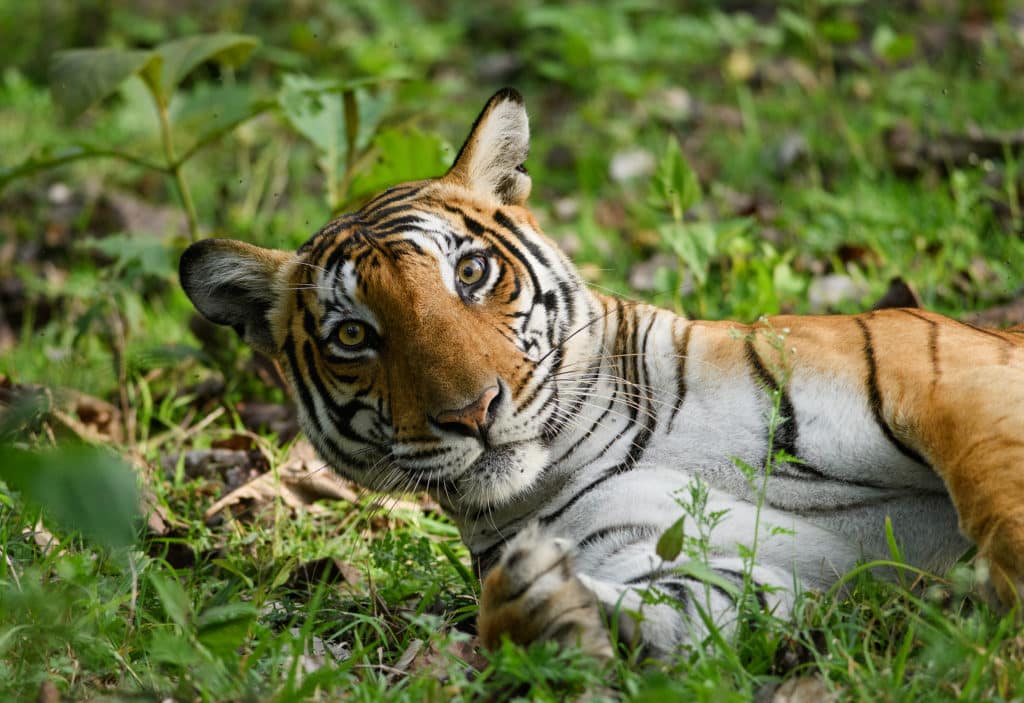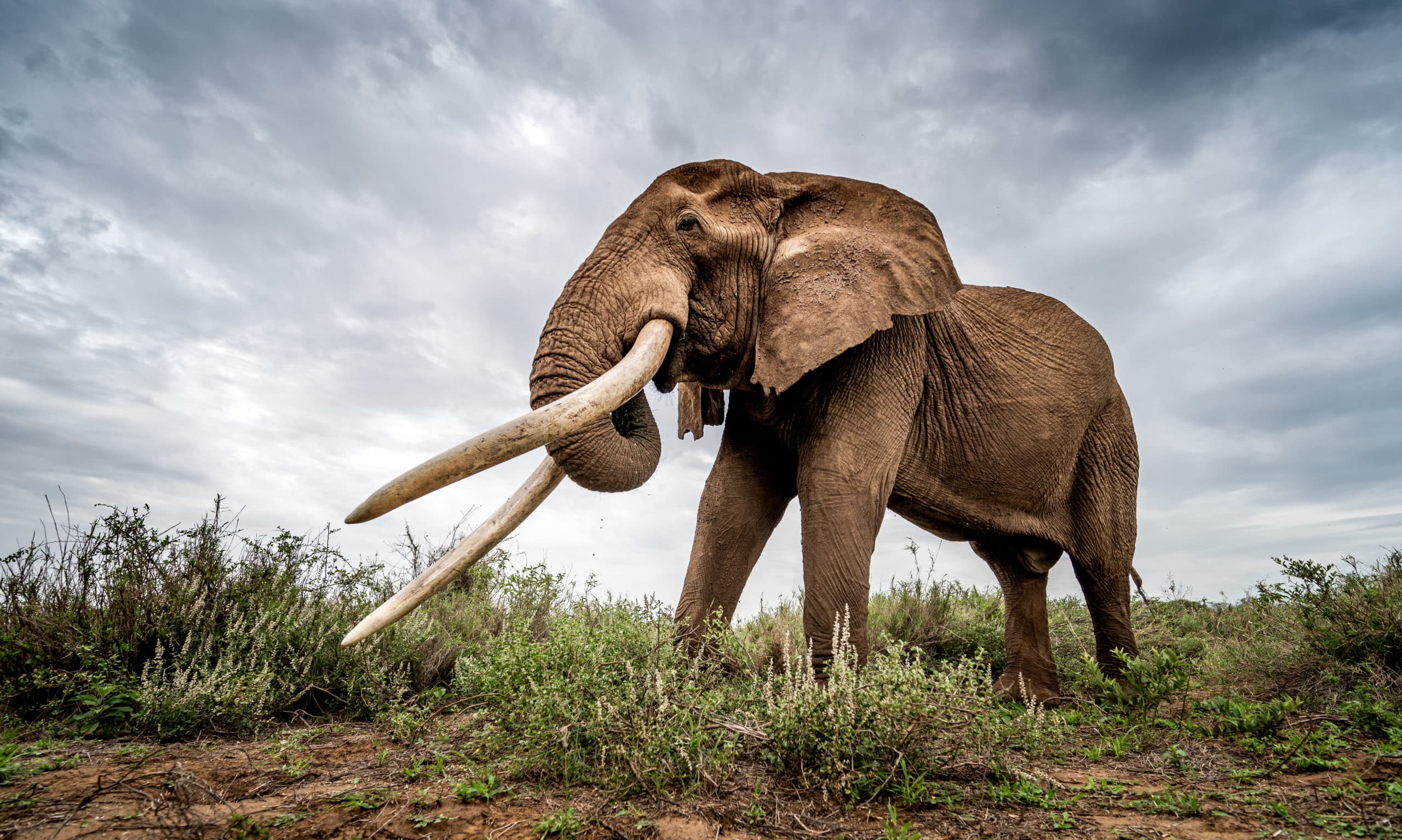The ‘Big 5’ is an old hunting term for the five most prized and dangerous animals in Africa for colonial-era hunters to shoot and kill: the elephant, rhino, leopard, Cape buffalo and lion.
I think there’s a better idea: to celebrate the remarkable animals we share the planet with via photography. That’s why I launched an international initiative in April 2020 to create a new ‘Big 5’ of wildlife photography, rather than hunting. Shooting with a camera and not a gun.

Graeme Green, New Big 5 Project Photographer, prepares to shoot footage of wildlife (Photo Credit: Andrea Moreno)
People around the world were invited to vote on the New Big 5 website (www.newbig5.com) for their five favourite animals to photograph or see in photos. A diverse group of more than 200 international photographers, conservationists and global wildlife charities came together to support the project, including Jane Goodall, Marsel van Oosten, Save The Elephants, the Dian Fossey Gorilla Fund, Conservation International, Ewaso Lions, and many more.
The project aims to use the New Big 5 to get people thinking and talking about wildlife and the threats they face. As a photographer and journalist, I’ve seen many of the problems that are causing declines in wildlife populations. I wanted to use this project and the website we created to raise awareness on issues like habitat loss, the illegal wildlife trade and climate change. As stated by Dr. Paula Kahumbu, CEO of Wildlife Direct, “Now we have the opportunity to respect wildlife for reasons other than as targets of our cruel games, and atone for our violence by pouring love, admiration and respect into a new understanding of a Big 5.”
It’s been incredible during the last long, dark, difficult year of the Covid-19 pandemic to see wildlife lovers around the world embracing the New Big 5 idea. The results of the year-long global vote have just been announced. The New Big 5 species are the elephant, polar bear, gorilla, tiger, and lion.

The new Big 5 species are the elephant, polar bear, lion, gorilla, and tiger (Photo Credit: New Big 5 Project).
All five animals are keystone species, essential to biodiversity conservation and the balance of nature in their native habitats. Elephants are ‘ecosystem engineers,’ spreading seeds and modifying landscapes. Lions and tigers maintain a balance between predator and prey, stopping herbivores from overgrazing vegetation. Gorillas control plant growth and aid in seed dispersal. Polar bears are an indicator of the health of the Arctic region. Each species is vital to the health of the planet, from clean air and water to forests that combat climate change, and to our future.
The five animals also offer a new bucket list to travellers, wildlife lovers and photographers to see and photograph in their lifetimes. Tourism funds many of the world’s conservation projects. The New Big 5 species can be found in a wide range of countries across Africa, Asia, Europe, and the Americas. Photographic tourism is booming and provides a much better way to celebrate wildlife than posing next to a carcass. The New Big 5 encourages travellers to visit the countries where the five species live, to support conservation efforts, and to learn about other species that share their habitats and the threats they face.

The tiger, one of the New Big 5 species. (Photo credit: Ramakrishnan Aiyaswamy)
We’ve worked hard over the past year to shine a light on conservation success stories and solutions, from new technologies to community projects to rewilding land parcels. As Jon Paul Rodríguez, Chair of the IUCN’s Species Survival Commission (SSC), says: “Conservation works. We just need to do more of it.” Although voting is now over, the New Big 5 website will continue to produce articles and interviews on wildlife, photography and conservation, aiming to inspire others to participate in global conservation efforts.
The ultimate message of the project is that all wildlife deserves to exist and every single species needs to be protected. We need urgent action. However, change is possible. “If we frame the narrative that we’re on the path to the end of the world and there’s no turning back, that doesn’t motivate people, and it isn’t true,” says photographer Ami Vitale, a supporter of the New Big 5 project. “That’s not to pretend things aren’t bad. We’re at a critical point. But we have to recognise that nature is incredibly resilient. If we work hard, nature can come back. So, we all need to use our voices and get actively involved. We all have a role – every single one of us.”
For more on the New Big 5, or for podcasts, interviews, articles, photo galleries and a free educational Fun Pack for young people, visit www.newbig5.com. Follow the New Big 5 project on Instagram @newbig5project


